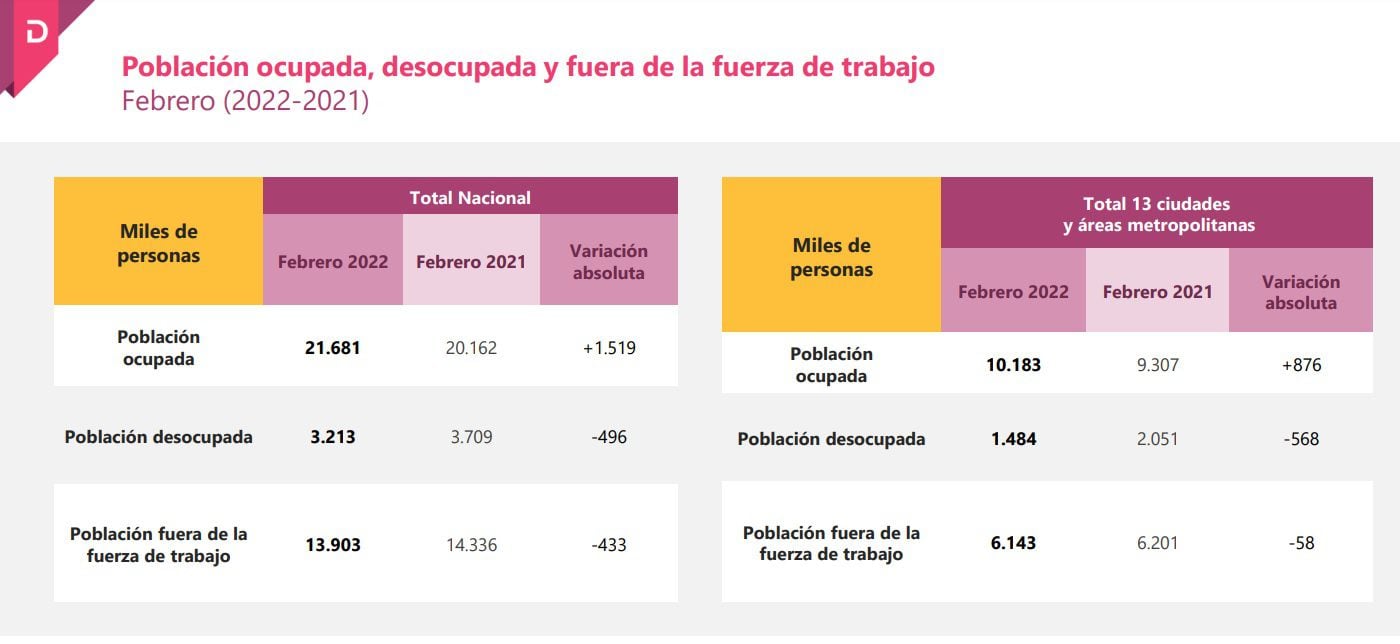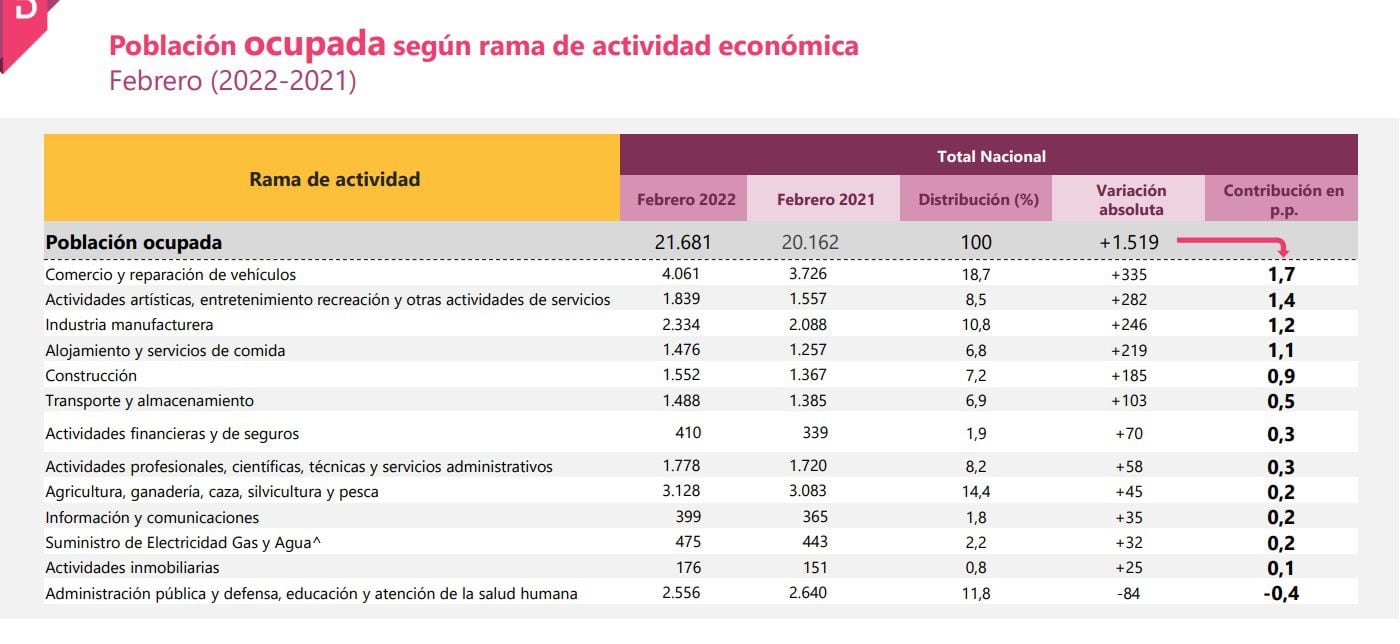
The National Department of Statistics (Dane) revealed this Thursday that unemployment in Colombia fell during the month of February. According to the entity, the figure stood at 12.9 per cent, which meant a decrease of 2.6% compared to January.
According to Dane, 21.7 million Colombians were employed in February, which represented an increase of 1.5 per cent over the same period of time in 2021, that is, 1.5 million more people working in the country.

According to the entity, the bulk of the population employed in the country during the month of February was reported in Tunja, Florence, Popayán, Valledupar, Quibdó, Neiva, Riohacha, Santa Marta, Armenia and Sincelejo, where 1.1 million people were employed, thus contributing 0.5 percentage points to the national employment rate.
In the “other headers” domain, Dane registered 5.7 million employees, which contributed 1.9 p.p to the national variation. For their part, the population and dispersed rural centers reported a figure of 4.7 million people employed during the month of February, that is, they contributed 0.8 p.p. to the national total.
According to Oviedo, the trade sector continues to be the driving force behind economic recovery in the country, since, in the second month of this year alone, it contributed to the recovery of 335,000 jobs. “In other words, we see the vehicle trade and repair sector as the most important driver in this reactivation agenda,” the official said.

The second sector that had the highest increase in the number of employed people in Colombia during February was agriculture, livestock, hunting, forestry and fishing, which showed growth of nearly 45,000 new jobs throughout the country, and which, in turn, contributed 14.4% of employment in the country.
Next, the director of Dane stressed that, in addition to trade and repair of vehicles, other economic activities that also contributed to the recovery of employment during February were arts, entertainment, recreation and other service and manufacturing activities that, in total, contributed to the recovery of more than 800 thousand jobs.
As for the economic sector that recorded the greatest fall compared to the number of employed people, the statistical entity indicated that it was public administration and defence, education and human health care, which reported a decrease of 84,000 people, thus contributing -0.4 percentage points to the national rate.
In the case of the 13 main cities and metropolitan areas of the country, trade and repair of vehicles, and artistic activities, the economic activities that most contributed to the recovery of employment in the country were, as well as at the national level. However, for this section, unlike the national rate, the construction sector was the third largest contributor to labor generation.
KEEP READING
Últimas Noticias
Debanhi Escobar: they secured the motel where she was found lifeless in a cistern
Members of the Specialized Prosecutor's Office in Nuevo León secured the Nueva Castilla Motel as part of the investigations into the case

The oldest person in the world died at the age of 119
Kane Tanaka lived in Japan. She was born six months earlier than George Orwell, the same year that the Wright brothers first flew, and Marie Curie became the first woman to win a Nobel Prize

Macabre find in CDMX: they left a body bagged and tied in a taxi
The body was left in the back seats of the car. It was covered with black bags and tied with industrial tape
The eagles of America will face Manchester City in a duel of legends. Here are the details
The top Mexican football champion will play a match with Pep Guardiola's squad in the Lone Star Cup

Why is it good to bring dogs out to know the world when they are puppies
A so-called protection against the spread of diseases threatens the integral development of dogs




